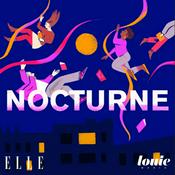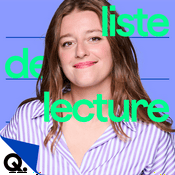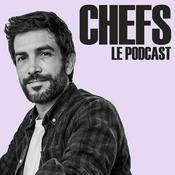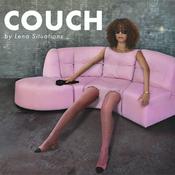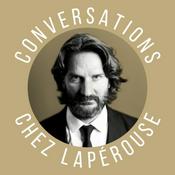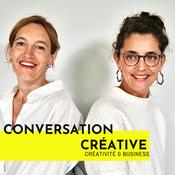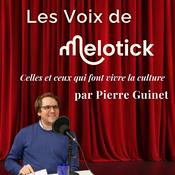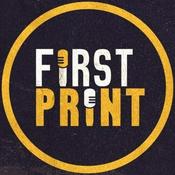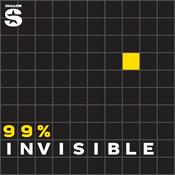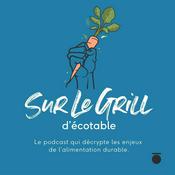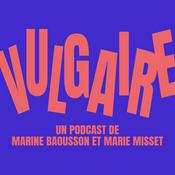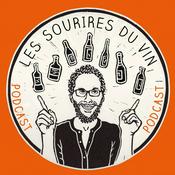98 épisodes
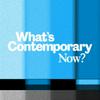
Angelo Flaccavento on Taste, Doubt, and the Beauty of Uncertainty
15/12/2025 | 49 min
Angelo Flaccavento has long been one of fashion’s most distinctive critical voices — sharp yet empathetic, rigorous yet imaginative, always willing to question his own certainties. In this conversation, he traces his path from a Sicilian childhood spent absorbing magazines in boutique backrooms to becoming a writer whose clarity and candor designers both fear and admire. We discuss the formative power of self-doubt, the responsibility of the critic in an era shaped by branding and algorithms, and why genuine surprise has become fashion’s rarest commodity. Angelo reflects on taste as a lifelong education, the tension between fantasy and reality, and the importance of staying fluid rather than defined in a moment obsessed with categorization. “I’m a dreamer, but not an escapist. Fantasy has to somehow crash to the ground in order to become reality.” - Angelo Flaccavento Episode Highlights: A Sicilian childhood shaped by boutiques and early fashion literacy Angelo grew up in Ragusa surrounded by family-run boutiques at the height of Italy’s fashion boom. Magazines, Versace dresses, Guy Bourdin images, and the glamour of the early ’80s became his first education in style and visual culture. Discovering i-D and turning Ragusa into his personal London Getting a subscription to i-D as a teenager becomes a defining moment. He reads each issue obsessively, treating it as a window into a world he hasn’t yet reached — the foundation of his sharp, culturally attuned eye. From aspiring designer to critic: finding the right medium Though he once dreamed of being a designer, he realized he was more drawn to ideas, imagery, and interpretation. Writing became his path, encouraged by teachers who sensed his voice before he did. A voice that evolves rather than settles Angelo talks about tone and style as living entities — shaped by constraints, sharpened by editors, and never fixed in place. He values clarity, concision, and atmosphere, always pushing himself toward more precision. Doubt as a creative engine He sees doubt not as insecurity but as momentum, calling it “the essence of progress.” Self-questioning keeps him open, curious, and resistant to stagnation. Criticism as decoding, not destruction For Angelo, the critic’s role is to cut through PR storytelling and help readers understand what they’re actually seeing. He believes in honesty delivered with generosity — critique as illumination, not cruelty. Maintaining integrity in a political, PR-driven industry He speaks openly about the emotional and professional navigation required each season, from access issues to difficult conversations, and why seeing shows live is essential to telling the truth. Fashion’s power to surprise Angelo celebrates the rare, electric moments when a show shifts the mood of the entire industry — reminders of why fashion still matters and how a collection can rewire the cultural conversation. Taste as instinct refined over a lifetime For him, taste is a mix of instinct and education — shaped by art history, architecture, vertical lines, trial and error, and everything one has ever seen. Taste is biography turned into perspective. What is contemporary now: resisting definition Angelo concludes that the most contemporary stance is fluidity — refusing to let algorithms, labels, or nostalgia define us, and staying open enough to see the world anew. Learn more about your ad choices. Visit megaphone.fm/adchoices

Camille Miceli on Pucci, Play, and Joie de Vivre
08/12/2025 | 42 min
Camille Miceli brings a vivid, almost incandescent joie de vivre to Pucci, treating color, movement, and intuition as both vocabulary and philosophy. Her worldview is shaped by an upbringing steeped in art and fashion, and by formative chapters with Alaïa, Lagerfeld, Jacobs, and Raf Simons — each adding a layer to her finely tuned sense of glamour and discipline. She reflects on the value of frivolity in an anxious age, the necessity of surrounding oneself with challengers rather than cheerleaders, and the quiet radicalism of returning Pucci’s prints to hand-drawn imperfection. The picture that emerges is of a creative director who treats joy not as escapism, but as a practiced, precise way of making a brand — and a life — feel vividly alive. “We didn’t come to this planet to suffer. I’m here to enjoy, even if there are stressed days. You have to laugh sometimes.” - Camille Miceli Episode Highlights: An upbringing steeped in art and fashionCamille grows up between an art-world father and a fashion-world mother, surrounded by New Realists, Guy Bourdin shoots, and Azzedine Alaïa at the dinner table — early immersion in glamour, image, and attitude. Alaïa as her first tough teacherAt sixteen she interns for Azzedine Alaïa, who is lovingly ruthless about precision. The “traumatic” rigor of placing rocks every ten centimeters becomes the root of her perfectionism and obsession with detail. Chanel and Karl as excess and foresight schoolAt Chanel with Karl Lagerfeld, she encounters fashion as total universe — decor, invitations, product, marketing — and learns to think several moves ahead, like the “Chanel forever” bag response to a critical article. Marc Jacobs and the power of generosity and teamsAt Louis Vuitton, Marc pulls her fully into the creative side, asks her to design earrings, and kick-starts her jewelry career. She absorbs his generosity, his habit of crediting collaborators, and his refusal to work with “yes people” — a model she now applies as a creative director. Dior, Raf, and the dialogue with art and designAt Dior under John Galliano and then Raf Simons, she deepens her passion for art, design, and couture, finding common ground with Raf through shared references and visual obsessions. How all those experiences prepare her for PucciYears in fittings, communication, and collaborations give her a 360-degree approach: she thinks about clothes, image, stores, and storytelling as a single ecosystem, which she now applies to Pucci’s collections and retail spaces. Pucci as art, joy, and imperfectionShe sees Pucci prints as psychedelic artworks and immediately brings hand-drawing back to restore “imperfection as perfection.” The wobbly lines and pressure marks make the prints human, charming, and alive. Using print as logo and rethinking heritage codesRather than drowning everything in pattern, she treats the print as a signature — a button, a jacquard, a matte-and-shine texture — so a black jacket can still read Pucci. She evolves the codes instead of changing them seasonally. A modern stance on fashion systems and wasteShe pushes see-now-buy-now because she hates the lag between image and product, especially in an age of instant gratification. Pucci runs only two collections a year, staggered like intelligent “drops,” which lets her reduce waste and think deeply instead of chasing volume. Collaborations, culture, and what’s contemporary nowShe favors collaborations that bring true know-how (technical skiwear, for example) over hype, and considers the Art Basel entrance carpet a proud moment of print as art rather than logo spam. When asked what is contemporary now, she lands on sharing, respect for others, and radical care for the planet — especially water — and dreams of self-sufficiency as the ultimate luxury. Learn more about your ad choices. Visit megaphone.fm/adchoices

Matthew Whitehouse and The Face of Today
01/12/2025 | 35 min
In this episode, Matthew Whitehouse reflects on the winding path from a rainy Lancashire childhood and a brief burst of band-life glamour to leading The Face, a title forever suspended between myth and reinvention. He speaks with disarming clarity about reviving an icon without embalming it, insisting that the magazine’s only true mandate is to capture the texture of now — not nostalgia, not futurism, but the pulse of the present. We explore the politics that slip in through lived experience rather than declarations, the power of small stories to illuminate larger truths, and the editor’s craft as an exercise in restraint as much as vision. For Whitehouse, what’s contemporary is whatever you’re excited enough to run toward — a simple, infectious creed that shapes every page he oversees. “I’m not interested in the future. I’m interested in now — in documenting what it feels like to be alive in this exact moment.” - Matthew Whitehouse Episode Highlights: Growing up in Morecambe and dreaming of escape Born in a rainy seaside town that felt “far” from where he was meant to be, Matthew talks about music as his first love and his imagined ticket out, from The Beatles and Oasis to Springsteen. The ice cream man with a band and big plans While friends went to university, he stayed behind in Morecambe, working as an ice cream man and waiting for his kicked out bandmates to finish college so they could take music seriously. Dropping out for The Heartbreaks and accidental fame in Japan He leaves university just before the fee deadline, signs a publishing deal days later, tours with his band The Heartbreaks, tastes pop-star treatment in Japan, then ends up back home working in a meat packing factory. Band life, Burberry campaigns and the old fear of selling out Alongside the band, he appears in a Burberry campaign and editorials for i-D and Dazed, remembering how brand work once felt like “selling out” in a way that feels almost quaint now. From factory freezer to i-D and the grind of becoming a writer While cutting lamb shanks at 5 a.m., he pitches free pieces to small music sites, builds a portfolio, lands a short research job at i-D’s video team, and eventually pivots into editorial because he knows he has to write. The fast leap from editorial assistant to editor of The Face In about three years he moves from editorial assistant at i-D to editor of The Face, initially thinking the relaunch is a bad idea before realizing the opportunity of a clean slate with a legendary masthead. Legacy, fragmentation and making a magazine about the now Everyone remembers a different “version” of The Face, so he sees himself as a guardian trying not to ruin something beloved while making it feel true to 2025, balancing global pop stars with niche local figures. Politics in the margins rather than as a banner He describes issues where politics is felt rather than announced, like an edition that quietly became about the cost of living crisis through its voices and stories rather than an explicit think piece. When timing lands and small stories carry big themes He relishes moments where covers hit the perfect moment, like Jenna Ortega on the day Wednesday drops, and stories like a Manchester record label piece that opens up into class, race and regional inequality. What makes a good editor and what is contemporary now He likens editing to jazz, knowing which notes not to play, trusting his team, staying in conversation with young people, and defines what is contemporary now as whatever you are genuinely excited enough to run toward. Learn more about your ad choices. Visit megaphone.fm/adchoices

Recho Omondi’s Candor, Curiosity, and The Cutting Room Floor
24/11/2025 | 51 min
Recho Omondi, host of The Cutting Room Floor, handles candor with the ease of someone who has little interest in performance and every interest in clarity. Over seven years, her once-modest podcast has steadily entered the cultural foreground, helped along by her habit of thinking — and learning — in public. She moves fluidly between roles: moderating conversations, appearing on other platforms, or steering her own interviews with a mix of composure and quiet provocation. There is an unmistakable steadiness to her presence, never loud, yet impossible to misread. Raised by a single Kenyan father, the youngest of three, and shaped equally by the American Midwest and a constellation of international cities, her education was as experiential as it was academic. Unbothered by imposter syndrome, assured in unfamiliar rooms, and pragmatic about a future she believes has no fixed ceiling, Recho isn’t one to ask for anyone’s permission. The goal with her work is to encourage people to think for themselves — to trust instinct, interrogate what is handed to them, and question the comfortable consensus wherever it appears. “There’s never been a room I didn’t feel worthy of. Every room I’ve ever been in, I’ve thought, ‘Oh, finally.’” - Recho Omondi Episode Highlights: A childhood of dual worlds: Recho grew up in small Midwest towns while spending every summer traveling through Europe and Kenya, giving her a uniquely global perspective from a young age. Raised by a single Kenyan father with big expectations: Her dad — an afropolitan ER doctor — emphasized reading, travel, ballet, theater, and intellectual curiosity, shaping her worldview and ambition. Independence born from the absence of a mother: Without a maternal figure at home, she learned self-sufficiency, adaptability, and emotional self-navigation — traits that now show up in her confidence and presence. The pre-med years and the turning point into fashion: Initially on a pre-med path, she realized fashion was her true calling after immersing herself in magazines and secretly visiting SCAD during spring break. Her fashion label as a crash course in business: Running her own brand for seven years taught her everything — production, trademarks, operations — a real-world business school built through trial and error. The Cutting Room Floor’s origin story: The podcast was born from frustration with how designers were misunderstood and siloed. She created the space she wished existed — honest conversations with the people themselves. Her stance on confidence and imposter syndrome: She has never experienced imposter syndrome; every room she’s entered has felt right. Her self-assurance stems from upbringing, birth order, and early exposure to diverse worlds. The recurring themes she sees across all conversations: Capitalism’s exhaustion, the tension between humanity and technology, and the truth that fashion is really about culture — not clothes. Her critique of fashion media and Vogue today: Recho believes American Vogue has lost its edge and that Anna Wintour should have passed the baton around 2010 — while global editions and independent magazines remain strong. What’s contemporary now: Kindness — not niceness. In a world overwhelmed by speed, noise, and digital disconnection, genuine empathy and presence feel modern, radical, and necessary. Learn more about your ad choices. Visit megaphone.fm/adchoices

The World According to LDSS
17/11/2025 | 44 min
In his first-ever podcast interview, Ludovic de Saint Sernin traces the journey from a nomadic childhood to becoming one of fashion’s most closely watched voices. He talks about the diary-like beginnings of his brand, the Mapplethorpe collaboration that became a full-circle moment, and why he sometimes becomes his own muse. We explore queerness, visibility, and the tension between intimacy and scale as his label grows, along with how travel, community, and personal history shape his work. He's a designer committed to beauty, honesty, and the freedom to define oneself. If you want to understand the world of LDSS—its sensuality, vulnerability, and conviction—this episode is the essential entry point. “Being contemporary now is being recognized for your uniqueness and cultivating it with audacity and strength, with a community around you that helps you build the message.” - Ludovic de Saint Sernin PS His collection for Zara is available in stores today. Episode Highlights: On names and identity The full name is a mouthful, even in French. LDSS exists so the world can say and recognize it easily while still honoring who he is. On an itinerant childhood Born in Brussels, raised in Abidjan, then dropped into Paris’s 16th where labels mattered. It was the shock that taught him how clothes define presentation and power. On finding fashion From sketching landscapes and Disney to sketching clothes in Paris. A mother who spotted the obsession early and sent him to draw, paint, and sew. On family and those legendary road trips Seven siblings across three marriages, languages braided together, summers packed into a car from Brussels to Portugal. A chaotic joy that shaped his sense of community. On travel as fuel Travel began as risk and escape and became a network. Work trips are less sightseeing than people finding. Inspiration now comes from the community he builds city to city. On launching the brand Leaving Balmain, making a first collection alone, putting a diary on the runway, and discovering a business on the fly when buyers immediately placed orders. On message and responsibility Autobiography became brand DNA. The work mirrors his story and holds up a mirror to queer life today, insisting on visibility without losing grace. On Mapplethorpe and making it personal A full circle collaboration treated like a six-month devotion, with hand work by Ludovic himself and the show in New York to honor the photographer’s city and spirit. On the designer as muse He steps in front of the camera when the story is intimate and the image needs his body to make sense. Be your own muse as liberation, not vanity. On what is contemporary now Visibility, audacity, community. Cultivating uniqueness with confidence and surrounding yourself with people who help you build the message. Learn more about your ad choices. Visit megaphone.fm/adchoices
Plus de podcasts Arts
Podcasts tendance de Arts
À propos de What's Contemporary Now?
Écoutez What's Contemporary Now?, Nocturne ou d'autres podcasts du monde entier - avec l'app de radio.fr

Obtenez l’app radio.fr gratuite
- Ajout de radios et podcasts en favoris
- Diffusion via Wi-Fi ou Bluetooth
- Carplay & Android Auto compatibles
- Et encore plus de fonctionnalités
Obtenez l’app radio.fr gratuite
- Ajout de radios et podcasts en favoris
- Diffusion via Wi-Fi ou Bluetooth
- Carplay & Android Auto compatibles
- Et encore plus de fonctionnalités


What's Contemporary Now?
Téléchargez l’app,
Écoutez.
